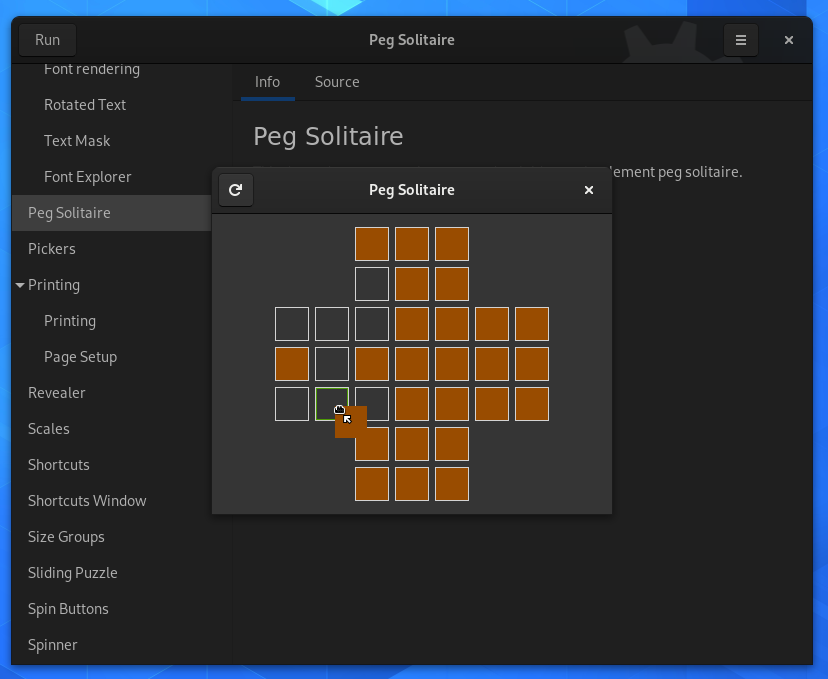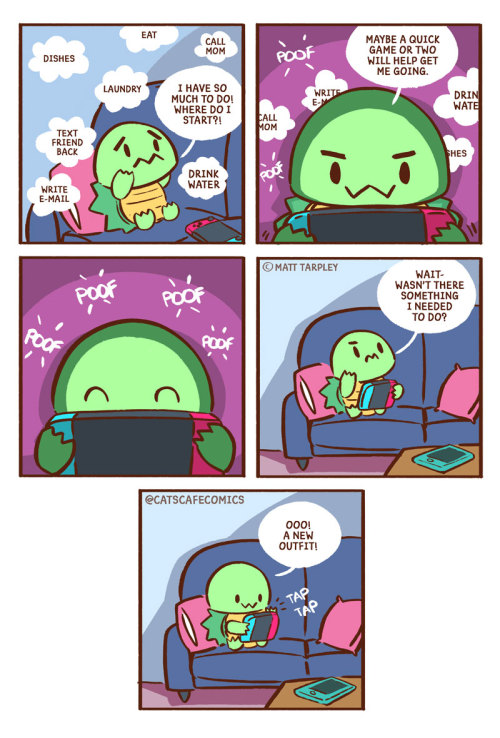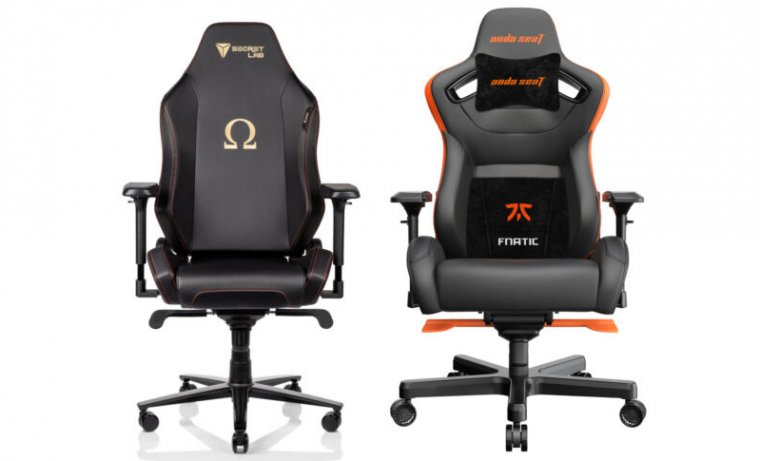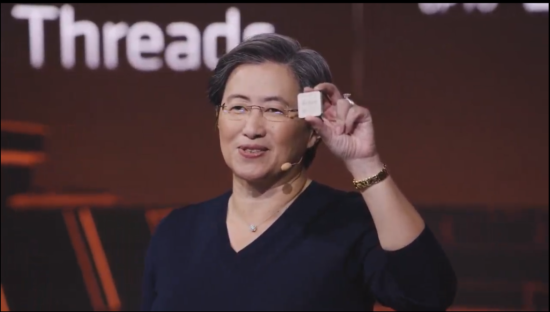-
chevron_right
Doom Is a Rhythm Game
comics.movim.eu / ArcadeRage · Tuesday, 15 March, 2022 - 14:15
And the controllers are swords.

Doom Is a Rhythm Game
comics.movim.eu / ArcadeRage · Tuesday, 15 March, 2022 - 14:15
And the controllers are swords.

Battlefield Running Simulator
comics.movim.eu / ArcadeRage · Saturday, 4 December, 2021 - 11:55
Watch out for the hovercrafts tho.

The Evolution of No Man’s Sky
mart.virkus · comics.movim.eu / ArcadeRage · Thursday, 26 August, 2021 - 12:30
The greatest comeback in gaming history.

Cast out the Heretic #GamingOpenSource
pubsub.movim.eu / gamingopensource · Sunday, 20 June, 2021 - 16:12 edit · 4 minutes
Cast out the Heretic! When gaming goes OpenSource! #GamingOpenSource #Gaming #MovimGamingOpenSource #AltTech #RaspberryPi #Kodi #GamingOpenSourceMovim #Heretic
In 1998 the game Heretic was shareware but its EULA was incompatible with GPL. However, on 8 September 2008 the game's code was rereleased but, this time, under GNU GPLv2. So now it qualifies as OpenSource.

Originally most people expected to play the game under Microsoft DOS (although yes some could play it on Mac). This make the game Heretic an interesting case (although not unique), setting it aside from other OpenSourced game engines such as that for Doom3 which went on to be used in the Thief3 style game "Dark Project" (which cannot run on DOS 16bit). Even though Heretic could be played on an opens-source operating system such as linux, Heretic is one of those games that is in the position of being able to be played on an Open Source Operating system such as Linux but also on the retroactively open-sourced Operating system DOS.
While it maybe seem like just an interesting redundancy, there is something useful about that fact. DosBox is an avenue for softwares to be released in locked down operating systems that can run DOSbox (like some Android devices), sometimes even with GPU passthrough (although not always). With it, 63MB of RAM can be accessed which is enough to play some media codecs in software, such as some XVid.
In reverse, the fact that a person can run the game in a DOS emulator or natively on linux means that bit by bit, people who use RetroPie gaming systems can move from using DosBox or an emulator to play the game (such as heretic), into using the native Linux operating system (such as on there Raspberry-PiZero or Pi3b, both of which can run on batteries as handheld with a small screen). Not only does this unleash the power of a retropie RaspberryPi device to utilise more of its full potential, but also it means modern mods and patches can be written to exploit RAM and other resources (more CPU power to integrate comms/chat features like XMPP including webcams which would use the ProtectionRings of the pi3b CPU in a VM). An example of a game, were it to be opensourced one day, that has had modern features added from both patches an mods is ut2004 (for linux or MSWindows) which uses dual core since patch v3369 but also RayTracing. It also uses dx11 but the OpenGL equivalent is yet to catch up to be rereleased.
Such games become scalable and modern features like adding xmpp chat in Movim or video-conferencing (such as in linux using a ps2 eye-toy camera or something more modern) are the upgrades that require the extra RAM, cpu power, and features such as protection-rings, thereby keeping open source communites engaged and able to organise multiplayer games or highscore rankings of single player gaming.
Breaking away from locked down android and zealous private company policing of "acceptable vocabulary" in Discord or Twitch style chat functionality, games such as Heretic can be on self-hosting Movim XMPP RetroPies like a pi3b as a handheld and using more of the 1GB RAM for added functionality as well as improved graphics and level design.

But why mention all this now? GTK4 is now out (using Glade, and can also run on MacOS) and with it, not only does the software allow for the design of Widget-Toolkit GUI software (which its GTK1 old DOS release had also done) but it can allow for movement of tiles (drag-and-drop), file-transfer, playback of video and 3D using software rendering or OpenGL, thereby meaning entire games resembling ut2004 (similar to xonotic or Dark-Project) like Heretic could be rewritten and compiled within a GTK4 app linking to Movim XMPP or even an IM, and using the video-conferencing with the protection-rings of a pi3b. The BSD to linux compatibility layer could also make efficient use of running BSD as the native OS on a Pi3b and then running linux in a BSD jail in a similar way to a linux VM, so you could run three PiZeros when each is in a VM as if three retropies are used. Then, self-hosting, all three can be tied together so their video-conferencing becomes three way (and thereby potentially infinite), not just one-to-one peer to peer movim video conferencing. The BSD to linux compatibility layer for a VM is far more efficient than running DOS or MSWIndows in each VM, and you can use more than one core per VM whereas you cannot on say Win98. You also have security updates.
IPFS could add more AltTech but through its distributed network rather than solely using decentralised like movim.
Features such as the drawing widgets in GTK4 can allow for sports-gaming, like a football match on TV, to have strategies drawn on the screen with an arrow or circle, etc.

Until now, many people have been relying on software such as Kodi to tie together all their audio/video media playback with their Emulated retro games software. With the potential for file-transfer and comms in GTK4, all this could change (or at least for video of 1080p and below such as 720p), especially as the pi3bplus is capable of running on battery as portable and it is a known quantity. People can then write their own software in GTK4, sometimes even with little coding knowledge (in simple applications). The PinePhone is another interesting device that might use some of this potential, running linux.
Snap to it.Snappy has ADHD so we’ll see more comics of Snappy...
comics.movim.eu / CatsCafe · Monday, 10 May, 2021 - 14:01

Snap to it.
Snappy has ADHD so we’ll see more comics of Snappy sharing their experiences.
 chevron_right
chevron_right
Gaming chair shootout: Secretlab Omega vs Anda Fnatic
Jim Salter · news.movim.eu / ArsTechnica · Friday, 16 October, 2020 - 12:29 · 1 minute

Enlarge / The Secretlab Omega (left) made a better first impression, but Anda Fnatic (right) won me over in the end. (credit: Secretlab / Anda)
One of the most important accessories of every home office frequently gets overlooked: the chair. With this year's COVID-19-related social distancing and mandatory remote work, many of us are spending a lot more time behind a desk at home than before—and without the right chair, that extra time can translate into discomfort or outright back pain.
I've never had much luck with "cheap" office chairs—a $350 mid-back office chair frequently turns into a throne of pain without sufficient extended breaks to get up and move around. Trendy Aeron chairs provide somewhat better ergonomic support for extended periods of seated work—but their $1,100 and up price tag is a little hard to swallow for many of us. This leaves the home office worker's secret weapon—the gaming chair.
It has been my experience that you get more—and more comfortable—chair for your money when you shop for gaming chairs. They're designed for maximum comfort and ergonomic support for long seating periods, and they're generally designed to support larger and heavier people than office chairs are as well. And they need to do it within a reasonable budget.
 chevron_right
chevron_right
Amnesia and Soma creator Thomas Grip explains how he makes games terrifying
Ars Staff · news.movim.eu / ArsTechnica · Wednesday, 14 October, 2020 - 14:15
Video produced by Justin Wolfson, edited by Patrick Biesemans. Click here for transcript .
Welcome to "Scare Tactics," a pilot for a video series that aims to explore how different creators make horror games. We see horror as a special genre—horror games aren't always played for the same reasons as other games. They aren't necessarily fun , and their reward often comes from overcoming one's own fears, rather than from overcoming the game's mechanics.
We're starting the series by cozying up to Frictional Games cofounder Thomas Grip. To call the release of Frictional's Amnesia: The Dark Descent a watershed moment in horror gaming would be a severe understatement—it launched the careers of many Let's Play YouTubers and spawned dozens of copycats all trying the same scare-your-brains-out formula. The company is currently working on Amnesia: Rebirth , but Grip took time away from finishing Rebirth to take us through his philosophy and approach to horror game design.
(Along the way, he also shared some Rebirth previews with us, and our video above showcases a few Rebirth gameplay elements that haven't been seen yet!)
 chevron_right
chevron_right
AMD’s new Zen 3 Ryzen desktop CPUs arrive November 5
Jim Salter · news.movim.eu / ArsTechnica · Thursday, 8 October, 2020 - 17:59 · 1 minute

AMD CEO Lisa Su holds up a Zen 3 CPU at today's AMD Gaming event—most likely, a Ryzen 9 5900X or Ryzen 9 5950X. (credit: AMD)
At today's AMD Gaming Event 2020, Team Red announced its next big thing in desktop CPUs—the Zen 3 powered Ryzen 5xxx series. The event was brief—only a half hour from start to finish—with AMD announcing record-breaking internal benchmark results.
AMD CEO Lisa Su, CTO Mark Papermaster, and Director of Technical Marketing Robert Hallock took turns extolling the new gear's features. The trio paints a picture of more unrelenting pressure being laid on competitor Intel. According to AMD testing, raw performance, power efficiency, IPC, and single-threaded performance all increased markedly compared to current leading desktop processors from both AMD and Intel.

Ryzen 9 5900X is a 12 core / 24 thread beast with a nearly 5GHz boost clock, but it still fits in a relatively frugal 105W TDP envelope. [credit: Jim Salter ]
According to CTO Mark Papermaster, Zen 3—the architecture next month's Ryzen lineup is based on—has been in development for over five years. Zen 3 features a new, unified 8-core complex that allows each core in the cluster direct access to L3 cache. Papermaster declared that the new architecture sees a 19% instructions per clock cycle (IPC) uplift when compared with Zen 2.
The future (and past) of mobile gaming
Jordan Crook · news.movim.eu / TechCrunch · Sunday, 5 January, 2020 - 19:20 · 8 minutes
The summer of 2008 changed everything.
Apple’s launch of the App Store a year after the release of the iPhone was a watershed moment not only in the business of technology, but in every aspect of humanity. Nearly every industry can look back at data before July 2008 and after and see how rapidly and profoundly things changed. But one sector in particular turned into a completely different beast.
Gaming.
We’ve seen some amazing firms come out of the mobile gaming space, some with more success than others. One gaming founder who experienced the full gamut of entrepreneurial emotion is Thor Fridriksson, founder of QuizUp. As we head into 2020, I hopped on the phone with him to discuss the rapid rise of QuizUp in the early oughts, its hard fall from grace following a botched deal with NBC and Fridriksson’s predictions about the next decade of mobile gaming.
(This interview has been edited for length and clarity. Emphasis is mine.)
Jordan Crook: Can you believe it’s almost 2020? Doesn’t feel real.
Thor Fridikksson: I remember when I was teenager. I was into role playing games like the typical nerds. One of the ones I loved the most was called Cyberpunk 2020. It was set in 2020, and it was all about bionic arms and implants and very, very futuristic stuff. And this is kind of why 2020 has a special meaning to me. But, usually, when people predict the future, they’re always so far off. It’s almost unbelievable.
Yeah, we haven’t quite gotten that that down yet, have we? Really being good at predicting the future. Maybe this next decade, with the era of big data, will change that. But let’s focus on the past for a bit. Take me 10 years back. I want to hear about how QuizUp became the popular game it was. You guys reached 20 million users in the first 12 months.
At the beginning of the decade, I was just graduating from university. I had lived in Iceland all my life, but for my MBA I moved to the UK to attend Oxford. It was a pretty wild time for me, especially because Oxford University had this annual thing called ‘Silicon Valley Comes to Oxford.’ I was watching this whole smartphone revolution that was just taking place.
We had the privilege of getting some really top entrepreneurs from the Valley at Oxford and they actually spent a whole week with students in the MBA program. People like Reid Hoffman, the founder of LinkedIn, and Biz Stone, one of the founders of Twitter, and others. I volunteered to be a tour guide for them.
And it was just fantastic! It was fantastic to be having dinners with these entrepreneurs from this totally different kind of environment in Silicon Valley. The environment for the U.S. entrepreneur is so much different from the European, in many ways. U.S. entrepreneurs have this kind of boldness, this fearlessness. Their feelings about failure were something that I was fascinated by.
At later stages, I would have to experience this myself. Personally, I think that one of the things that the U.S. entrepreneurial ecosystem gets right is that the stigma of starting a business and failing one is not nearly as strong as it is in Europe. If you start the business in Europe and you somehow fail, you will not have any chance to … it’s like, you’re an immediate loser. Whereas the thinking, or how people perceive entrepreneurs in the U.S., is that they’re those guys that try and try and try again. This is such a big difference in mentality between the two continents, and this is one big advantage that the U.S. has.
Fridriksson returned to Iceland after graduating Oxford during one of the biggest economic collapses in the world, which hit Iceland particularly hard. “There was absolutely nothing for a newly graduated business guy to do,” he said. This is around the time he started Plain Vanilla, which would be the parent company of QuizUp. He completely focused on the Icelandic market, unconcerned with the U.S., after having seen the smartphone unlock various geographies.
The first game out of Plain Vanilla wasn’t a trivia game at all. It was actually a children’s game called The Moogies that Fridriksson spent 18 months designing and producing. He recalls it as the classic founder story — he sold all of his stuff, spent all of his money and took out a bunch of loans to fund the project. “I wasn’t really thinking about VCs or anything like that, especially because there weren’t any here in Iceland at the time,” said Fridriksson.
In 2011, Plain Vanilla launched the Moogies, a sort of interactive, cartoon-based game for kids.
It was a massive failure. It’s one of those moments in life where you just put your heart and soul into something. I will always remember this moment. It was a pivotal moment before I started QuizUp. We were working with this big publisher, and I was waiting to see the first sales numbers for the game after it launched.
It was a big thing in Iceland. I was in the press and doing interviews and the launch of the game was big news in Iceland because we’re such a small country. I was really excited and I was thinking, ‘I hope it’s going to be 500,000 downloads, but 100,000 would be great. 50,000 would be OK.’ I was refreshing the dashboard and when I finally saw the number, it was only 500 units sold. Immediately, in one heartbeat, I knew that one and a half years of hard labor was down the drain.
What do you think went wrong there? Did you spend too much time building it out without an MVP or a beta? Do you think it would have done better if you shipped something a bit more bare bones earlier?
I don’t think that was what I did wrong. Actually, I’m a big believer in polish. Especially when it comes to games, I don’t think you should just try to get something out to prove something. You should really, in all your products, think about the details and offer a more finished product than an MVP.
In the case of the Moogies, it was a paid app. This is just around the time when free-to-play and the freemium economy was starting. So, paid apps just did significantly worse. The reason I wanted it to be paid is because I didn’t like advertising, especially not in children’s apps. I was against in-app purchases at the time and advertising, and I just wanted to create a very safe and nice experience for young children. I had my own toddler at the time who was the Chief Tester of the game.
So, it was a paid app. But the other issue is that breaking into the children’s category is so tough. They are probably the most brand loyal audience you will ever find. And I’m not really talking about the kids, I’m talking about their parents. When you have a kid that likes a certain theme of toy, like Mickey Mouse or whatever it is, their parents will only buy that. It’s very hard to get any sort of virality or break into children’s brands without mainstream marketing money.
Was the Moogies the only game Plain Vanilla launched before QuizUp?
Well, I get this idea of QuizUp. It’s a dark winter night in Iceland. I had just realized that I was bankrupt. And there was no way for me to get any more funding from Iceland. I was really feeling, what I mentioned before, this scorn. I would go to see investors and they’d ask how Moogies went, and I would tell them and try to make it look prettier than it was. They would block me immediately because there is this stigma of failure. And this is when I really felt that being in Europe, and having failed on my first try… it really damages your chances of getting up again.
I get this idea for QuizUp and write it on this electric bill that I can’t pay. And I was just convinced. I get this really strong feeling that this game would be the formula to virality and success. Users would play real people in real time and they would have all these rankings and titles. People are so vain, in general, that I knew they would just love it. It felt like something that hadn’t been done before and I really wanted to do it.
But, again, I had no money. I was totally bankrupt and had no employees anymore. But I remembered those guys from Oxford, Reid Hoffman and Biz Stone, and I think to myself, ‘I’m so connected. I’ll just go there. I’m 100 percent sure that with this great idea, these VCs will just throw money at me. I’ll be able to do this. Easy Peasy.’
Fridriksson hired two engineers on the promise of getting to move to San Francisco and help on the project. The plan was for the engineers to build a prototype of QuizUp while Fridriksson went around to VCs trying to secure seed funding. They all lived in a small apartment together.
This plan was a bit naive, when I look back at that time. I was expecting a red carpet to be waiting for me. That, when I arrived in San Francisco, people would be throwing money at me. And it was actually quite the opposite. Getting seed funding with just an idea is quite hard.
So did you get the funding?